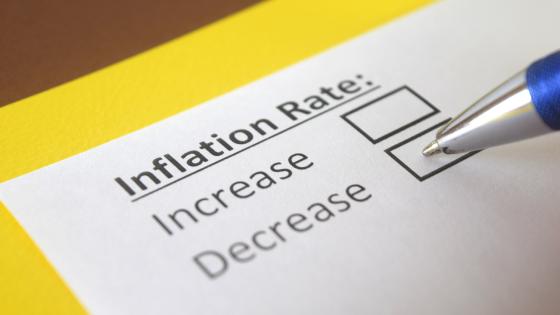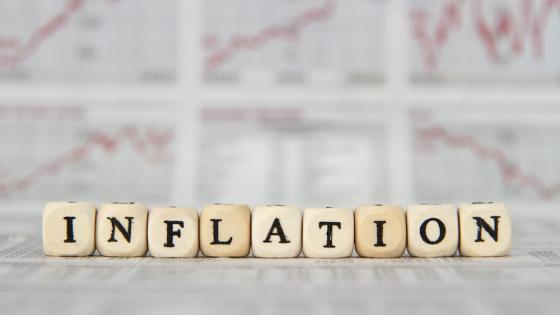Central banks across the world are engaged in an arduous struggle against inflation. Meanwhile, public debt levels have reached historic highs propelled by the large fiscal deficits during the global financial crisis and the COVID-19 pandemic. Some fear that high public debt levels could hinder ongoing disinflationary efforts because they may contribute to raising inflation expectations. For example, people may question central banks’ determination to swiftly reduce inflation given that temporary higher inflation erodes the real debt burden. Whether public debt levels influence inflation expectations is also relevant to the ongoing debate about the role of fiscal policy in the determination of the price level (Cochrane 2023).
High public debt levels raise household inflation expectations…
To shed light on the effect of public debt on inflation expectations, in a recent paper (Grigoli and Sandri 2023) we rely on information provision experiments in household surveys across three countries. The core structure of the survey involves (i) eliciting people’s initial beliefs about inflation expectations and public debt levels, (ii) providing a treatment group with information about the correct level of public debt in their countries, and (iii) allowing the survey respondents to revise their inflation expectations. The econometric analysis tests whether people in the treatment group that are surprised by the high level of public debt tend to revise inflation expectations upwards relative to people in the control group. This analytical approach has been successfully used in earlier papers to examine the role of other factors that may affect households’ and firms’ inflation expectations (Gorodnichenko et al. 2019, Schoenle et al. 2020, Gorodnichenko et al. 2021).
A distinctive feature of our analysis is that it is conducted in three countries – the US, the UK, and Brazil – in collaboration with YouGov, an international data analytics company. The cross-country dimension makes it possible to examine the robustness of the results across different economic and institutional environments – a proverbial concern with survey analysis based on a single country.
We find that people substantially underestimate the level of public debt and revise inflation expectations upwards when informed about the correct levels. Notably, the size of the revisions is proportional to the information shock. This is illustrated in Figure 1. The charts show that people in the treatment group with lower initial debt beliefs – who are therefore more surprised by high public debt levels – increase inflation expectations more strongly relative to people with already higher initial debt beliefs. Regarding the quantitative effects, we find that an increase in public debt by 10% of GDP leads to a rise in one-year ahead inflation expectations by about 0.6%.
Figure 1 Change in inflation expectations depending on pre-treatment debt beliefs (percentage points)
… but central banks influence the relationship
The strength of the impact of public debt on inflation expectations is, however, heavily shaped by the central bank’s credibility. In the survey, we asked participants about their degree of confidence in the ability of the central bank to prevent large inflation increases relative to current levels. The results show that public debt information prompts people with the lowest degree of confidence to revise inflation expectations upwards by more than three times as much as people with the highest degree of confidence (Figure 2). Indeed, the increase in inflation expectations for people with the highest confidence is not statistically significant. We also find evidence that inflation expectations are less sensitive to debt levels for people with more knowledge of the inflation target and more confidence in the government's fiscal restraint.
Figure 2 Change in inflation expectations depending on central bank credibility (percentage points)
High public debt levels as adverse supply shocks
Regarding the cognitive channels that may drive people’s causal association from public debt to inflation, we do not find evidence these run through concerns about monetary finance. People do not associate higher public debt with a higher likelihood that central banks may provide direct financing to the government – a channel that is possibly too sophisticated for the general population. People seem instead to consider higher debt levels as harbingers of future bad economic outcomes, entailing both higher inflation and higher unemployment. Hence, through the lenses of macroeconomic theory, high debt levels operate as stagflationary shocks.
Stronger effects on women and low-income people
We also find evidence that the effects of public debt on inflation expectations are highly heterogenous across people. For example, women tend to revise inflation expectations upwards twice as much as men when informed about the high level of public debt (Figure 3). Low-income people are also much more responsive than high-income people, whose expectations appear insensitive to information about public debt. This heterogeneity is partly explained by differences in the degree of confidence in the central bank and knowledge about the inflation target.
Figure 3 Change in inflation expectations: Men vs women and low-income vs high-income (percentage points)
Policy implications
These results raise concerns about the effects of high public debt levels on inflation expectations, especially because people considerably underestimate the stock of public debt. Therefore, events that may draw people's attention to the fiscal situation – for example, market pressures due to ongoing monetary tightening – could significantly raise household inflation expectations. Yet the analysis also provides a somewhat comforting message. An increase in inflation expectations due to high public debt would be unlikely to boost private demand because people would also expect a deterioration of the labour market.
Risks posed by high public debt for inflation expectations can be substantially reduced by strengthening confidence in the central bank's determination to fight inflation. Therefore, public information campaigns about central banks’ mandates and their historical track record in containing inflation can considerably help to anchor inflation expectations. The payoff could be particularly large if campaigns target women and lower-income households since their inflation expectations are more sensitive to public debt levels.
Authors’ note: The views expressed herein are those of the authors and should not be attributed to the BIS, the IMF, or the Central Bank of the UAE.
References
Cochrane, J (2023), The Fiscal Theory of the Price Level, Princeton University Press.
Grigoli, F and D Sandri (2023), “Public debt and household inflation expectations”, CEPR Discussion Paper No. 18010.
Gorodnichenko Y, M Weber, and O Coibion (2021), “How inflation expectations affect households’ spending decisions”, VoxEU.org, 19 March.
Gorodnichenko Y, T Ropele, and O Coibion (2019), “Firms' expectations of inflation matter: New evidence”, VoxEU.org, 5 March.
Schoenle R, Y Gorodnichenko, E Knotek, and O Coibion (2020), “Average inflation targeting and household expectations”, VoxEU.org, 30 September.






